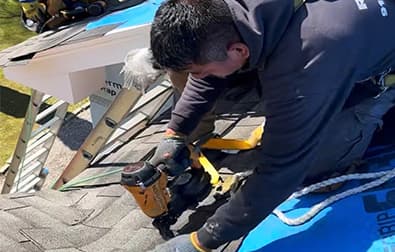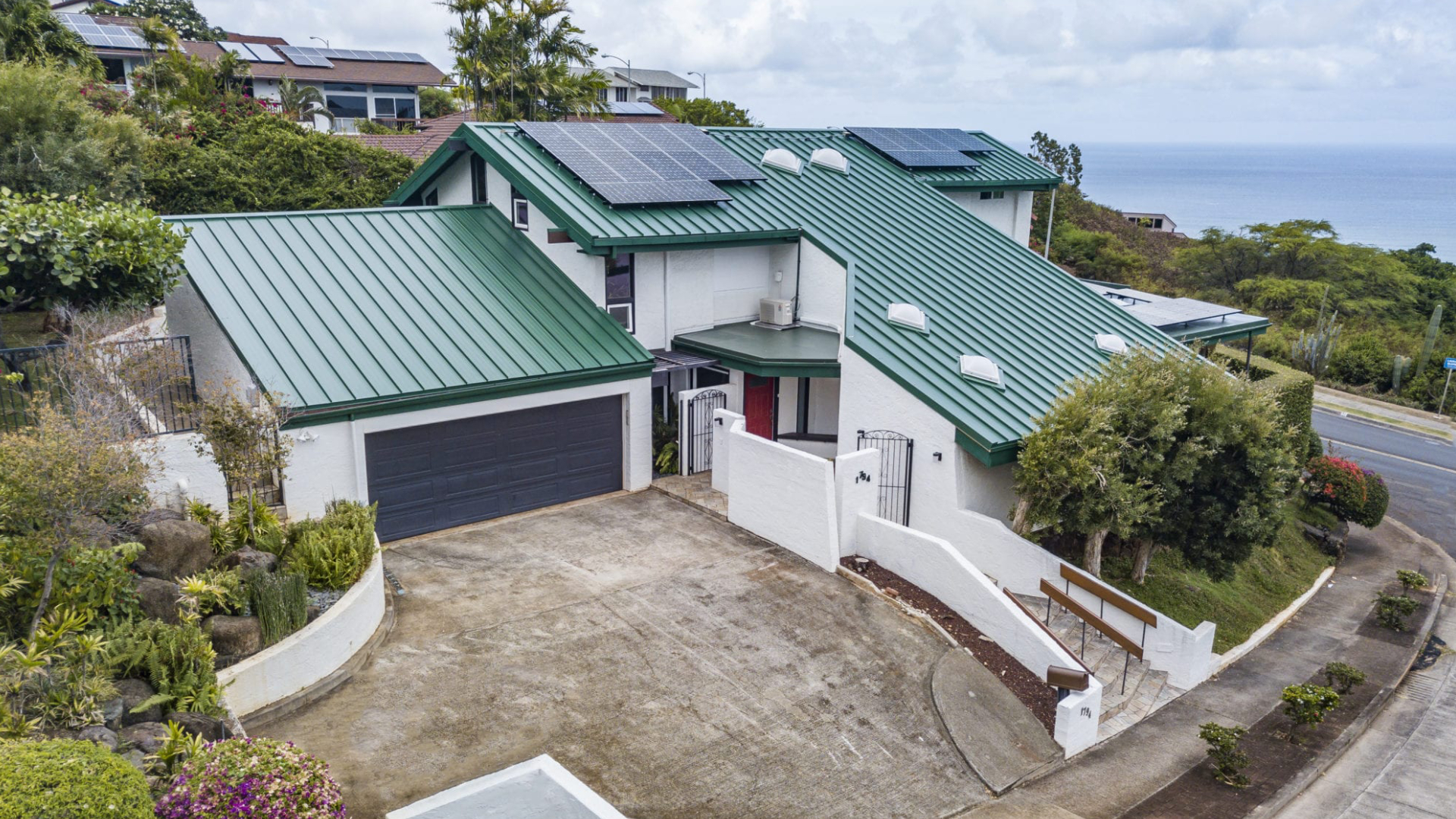Whether it’s a minor fix or full replacement, hiring skilled roofers oahu is key.
Whether it’s a minor fix or full replacement, hiring skilled roofers oahu is key.
Blog Article
Discover Common Roof Covering Issues and Exactly How to Address Them Successfully
When it pertains to your roof, detecting issues early can save you money and time. You could observe water spots on your ceiling or cracked roof shingles throughout your routine checks. Neglecting these indications can cause bigger issues down the line. Recognizing exactly how to identify and deal with these usual roof problems is essential for preserving your home's honesty. What particular actions should you take to assure your roof stays in leading condition?
Recognizing Roofing System Leaks and Their Causes

Next, analyze your roofing system from the exterior. Look for missing out on or split tiles, rusted blinking, or harmed rain gutters. Take notice of locations around chimneys, vents, and skylights, as these prevail leakage sources. If you detect any of these concerns, it's vital to resolve them immediately.
During heavy rainfall, observe your roofing for any pooling water or drips. This can disclose leaks that might not be noticeable during completely dry problems. By remaining alert and frequently evaluating your roofing system, you can capture leakages early and protect your home from additional damages.
Handling Missing Out On or Damaged Roof Shingles
When you see missing or damaged shingles, it's necessary to act promptly to stop additional issues. You'll wish to recognize the level of the damage, repair any missing shingles, and think about precautionary maintenance tips to keep your roofing system in top shape. Taking these actions can conserve you money and time in the future.
Determining Shingle Damage
Although shingles are developed to endure the components, they can still experience damage in time, causing possible leaks and costly repairs. To identify shingle damage, begin by checking your roofing for missing out on, fractured, or curled shingles. Look for indicators of staining or granule loss, which can indicate deterioration. Focus on any locations where shingles are lifting or twisting, as these can create susceptabilities. It's likewise a good idea to inspect for water stains or mold and mildew on your ceilings and walls, as these might signal leakages stemming from damaged shingles. On a regular basis monitoring your roofing system, especially after severe weather condition, can aid you catch problems early and maintain the stability of your home.
Fixing Missing Roof Shingles
After identifying tile damages, the next step is resolving any missing or damaged roof shingles promptly to stop more concerns. Beginning by evaluating the affected area and identifying the amount of roof shingles need replacement. If you can, climb onto your roofing securely, putting on ideal equipment. Get rid of any kind of damaged shingles thoroughly using a pry bar. Once you have actually removed the area, slide in the new shingles, guaranteeing they line up with the existing ones. Protect them with roof nails and apply roofing adhesive for included stability. Don't neglect to secure the edges to avoid water infiltration. If you're uncomfortable with the repair, it's a good idea to call an expert. Acting quickly will help keep your roofing system's integrity and expand its life-span.
Preventive Upkeep Tips
Just how can you maintain your roofing in top shape and protect against roof shingles from going missing or obtaining damaged? Inspect your roof at least twice a year and after extreme weather (roofing materials hawaii).
Maintain gutters tidy and without particles to guarantee appropriate water circulation and prevent roof shingles damages. Cut looming branches to reduce the danger of them scratching against your roofing system during tornados.
Take into consideration applying a protective sealer to extend your roof shingles' life-span. If you discover any type of concerns, address them immediately to stay clear of pricey repairs later. Taking these safety nets can save you time and money while ensuring your roof covering stays long lasting and trusted.
Recognizing Roof Air Flow Issues
Proper roofing system ventilation is vital for preserving the long life and efficiency of your roof, as it helps regulate temperature level and moisture degrees in your attic. Without adequate ventilation, you may face issues like excessive warmth buildup, causing premature shingle wear and tear, or increased moisture that can create mold growth and timber rot.
To assess your roofing system ventilation, check for indicators of getting too hot, such as distorted shingles or a warm attic room. Seek blocked vents, which can limit air flow and catch heat. You should guarantee your consumption and exhaust vents are balanced, enabling proper air exchange.
If you suspect air flow problems, consider mounting additional vents or updating existing ones. Ridge vents, soffit vents, and gable vents can all improve air movement. Addressing these concerns immediately can protect your roofing system and save you from expensive repairs down the line. Keep proactive in keeping your roof covering's air flow to protect your home.
Addressing Roof Covering Moss and Algae Growth
While you could appreciate the natural look of moss and algae on your roof covering, these organisms can cause significant issues if left untreated. They catch moisture, which can lead to tile degeneration and leaks. To tackle pop over to these guys this problem, beginning by removing any type of noticeable development. Use a soft-bristle brush to carefully scrub away the moss and algae, bewaring not to damage your roof shingles.
Next, consider applying a specialized roofing system cleaner or a blend of water and bleach to kill remaining spores. Regular evaluations and upkeep will certainly assist stop moss and algae from returning, ensuring your roof stays in excellent form for years to come.
Fixing Storm Damages and Wind Concerns
After a tornado, it's crucial to examine your roofing system for damages brought on by high Source winds and heavy rain. Beginning by looking for missing out on or damaged shingles, as these prevail casualties. If you observe any kind of, it is necessary to change them immediately to stop leaks. Next, inspect the blinking around chimneys and vents; harmed flashing can result in water penetration.
Try to find any type of sagging locations, which might suggest water accumulation or architectural problems. If you discover any kind of particles, like branches or leaves, remove them meticulously to avoid more damage. If your seamless gutters are clogged, clear them to guarantee appropriate drain.

For little repairs, you may manage it on your own, however do not hesitate to call a professional for extensive damages. Bear in mind, acting rapidly can save you from larger problems down the line, so take that analysis seriously and resolve any problems asap.
Acknowledging Indicators of Architectural Damages
Exactly how can you inform if your roof is enduring from structural damages? Next, check for cracks or gaps in the wall surfaces or ceiling, as these can signal moving or settling due to roof concerns. If you discover missing out on or broken roof shingles, it's necessary to address them promptly, as they can subject your roof covering to additional damage.
Regular Maintenance Tips for Long Life

Routine Inspections Significance
Because a roof covering is your home's first line of protection against the aspects, normal evaluations are vital for maintaining its stability. You should inspect your roof covering at least twice here are the findings a year, ideally in springtime and fall, to catch potential concerns early. Maintaining up with these evaluations can protect against expensive repairs down the line and lengthen your roof's life expectancy, guaranteeing your home remains secure and sound for years to come.
Appropriate Seamless Gutter Maintenance
Routine roofing evaluations normally lead to the significance of appropriate seamless gutter maintenance. Tidy your seamless gutters at the very least twice a year to avoid obstructions from leaves, dirt, and debris. If you reside in a tree-heavy location, take into consideration inspecting them regularly. Use a durable ladder and put on gloves while removing the buildup. Inspect your gutters for leaks or rust; they can cause water damage to your roof and home. Ensure downspouts direct water away from your foundation to prevent flooding. Setting up seamless gutter guards can decrease particles buildup and minimize upkeep time. Finally, check for correct incline; rain gutters must incline towards the downspouts to assure suitable drain. By following these pointers, you'll expand your rain gutters' life expectancy and secure your roofing.
Frequently Asked Questions
Just How Can I Select the Right Roofing Material for My Home?
To pick the best roof covering product for your home, take into consideration environment, sturdiness, and visual appeals. Research choices like asphalt shingles, steel, or tile. Consider upkeep needs and budget plan to find what fits you finest.
What Are the Signs I Required a Roof Replacement As Opposed To Repair Service?
If you observe prevalent leaks, sagging, or missing out on tiles, you could need a roofing substitute. If your roof covering's nearing its life-span or has significant damages, it's time to contemplate a full replacement rather of just fixings.
Exactly how Commonly Should I Set Up Professional Roofing System Inspections?
You must set up specialist roof covering inspections at the very least annually, ideally in spring or fall. This helps catch prospective issues early, ensuring your roof remains in good condition and extending its life expectancy.
Can I Set Up a New Roofing System Over My Old One?
You can set up a brand-new roof over your old one, but it's necessary to inspect local building regulations and ensure the existing roof covering's problem is sound. This method can save money and time, yet think about prospective problems.
What Is the Average Life Expectancy of Various Roof Materials?
The standard life-span differs by product: asphalt roof shingles last 15-30 years, metal roofing systems can last 40-70 years, while tile or slate roofs may go beyond 50 years. Choose intelligently based upon your climate and spending plan.
Conclusion
By staying vigilant and resolving typical roofing issues without delay, you can safeguard your home and expand your roofing system's lifespan. With a little regular maintenance, you'll not only protect your financial investment but likewise enjoy peace of mind understanding your roofing system is in leading form.
Report this page